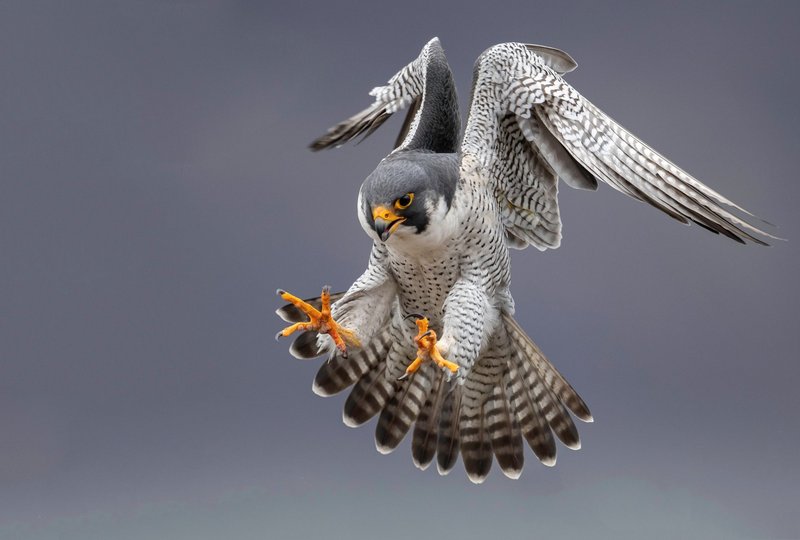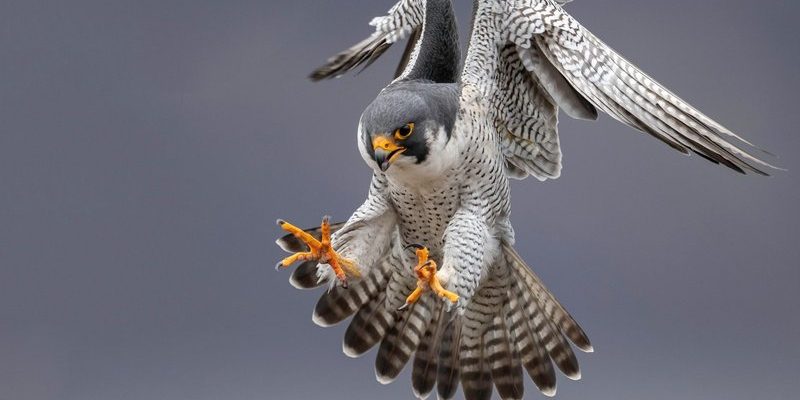
You might be wondering how these avian athletes manage to thrive in such diverse habitats—from bustling cities to remote mountains. Falcons are incredibly resourceful, and their adaptations help them find food, escape predators, and even nest comfortably. It’s like they come with a built-in toolkit that helps them get by in any situation. Let’s dive deeper into the fascinating world of falcons and explore the various ways they adapt to their environments.
Physical Adaptations: Built for Speed
One of the first things you’ll notice about falcons is their incredible physical features. With sharp, curved beaks, long wings, and keen eyesight, they’re perfectly equipped for life on the hunt. These adaptations aren’t just for show; they’re essential for survival in a competitive ecosystem.
Wings are particularly interesting. Falcons have long, pointed wings that make them incredibly aerodynamic. This design allows them to soar high in the sky with minimal effort and enables quick, rapid dives to catch unsuspecting prey. For example, a peregrine falcon, which is the fastest bird in the world, can spiral down with such force that it can catch other birds mid-air. Isn’t that mind-blowing?
Beaks are another fascinating aspect. The sharp curves of their beaks help falcons efficiently tear flesh. When a falcon catches its prey, it uses its beak to deliver a swift kill and consume its meal quickly. This feature is crucial since falcons often hunt birds and small mammals, and they need to eat promptly to avoid losing their catch to larger predators.
Behavioral Adaptations: Smart Hunters
Apart from their physical traits, falcons exhibit remarkable behavioral adaptations that make them effective hunters and survivors. Their hunting techniques vary greatly, showcasing their ability to adapt to different environments and prey types.
Hunting Strategies differ from one species to another. For instance, while some falcons prefer to hunt alone, others work in pairs or even groups, especially during migration. You might see a larger flock of falcons working together to catch small birds, which can be more effective than hunting solo. These social behaviors show flexibility in how they approach finding food.
What’s even more intriguing is how falcons choose their hunting grounds. They often select high perches to spot potential prey. This allows them to survey their surroundings and make calculated decisions about where to strike. By adapting their hunting locations to include urban areas, many falcons have learned to take advantage of the plentiful food sources available in cities—think pigeons!
Habitat Adaptations: Thriving in Various Environments
Falcons are found in a variety of habitats, from deserts and mountains to urban settings. Their ability to thrive in different environments is a testament to their adaptability. But how do they manage it?
Nesting Sites are one of the key adaptations falcons have made. While many birds look for trees to build their nests, falcons often choose high cliffs or ledges. This choice provides them with safety from ground predators. In urban areas, they’ve adapted to nesting on tall buildings, which mimic their natural cliff-side homes. It’s like they’ve transformed the city skyline into their own habitat!
Additionally, their prey selection changes based on available resources. Falcons might eat small mammals in a rural setting, but in a city, they often switch to birds or even insects. This flexibility helps them survive in places where their preferred food isn’t easily accessible.
Seasonal Adaptations: Preparing for Change
Falcons are also masters at dealing with seasonal changes. Just like we might swap out summer clothes for winter ones, these birds have strategies to cope with the shifting seasons.
During the colder months, many falcon species migrate to warmer habitats. This prevents them from facing food shortages during winter. Species like the peregrine falcon travel thousands of miles to find suitable climates where prey is abundant. It’s quite the journey, and it takes a lot of energy, but their ability to adapt to different climates is what makes this possible.
Additionally, falcons adjust their hunting and breeding behaviors based on the season. In spring, they become more territorial and prepare for nesting. This seasonal shift not only impacts where they live but also how they interact with other birds, ensuring they can raise their young in a safe environment.
Conservation and Human Influence: Adapting to Change
With the rapid changes in our world—like urban development and climate change—falcons have had to adapt in ways we might not fully understand. Conservation efforts play a significant role in helping them thrive despite these challenges.
Conservation Programs focus on protecting natural habitats and ensuring clean environments for falcons to live and hunt. For instance, some areas have implemented policies to protect cliffside nesting sites and promote safe urban spaces for falcons. These efforts make a real difference in their populations, allowing these incredible birds to flourish.
On the other hand, human activity can sometimes pose threats to falcons. Pesticides and pollution can harm their food sources, making it harder for them to find nutrition. Their ability to adapt is being tested, but many falcons are resilient. Those that thrive in urban areas, for example, have learned to cope with environmental changes in remarkable ways.
Falcons are truly incredible creatures. Their adaptations, both physical and behavioral, are a testament to their resilience in varied environments. From soaring high in the skies to hunting with precision, these birds have evolved uniquely to thrive.
As we continue to change our landscapes, it’s crucial to remember the importance of conservation and protecting the natural habitats that allow these magnificent birds to thrive. Falcons remind us that adaptation is key—not only in the wild but in our lives too. So, next time you catch a glimpse of a falcon soaring above, think about the myriad ways it has adjusted to comfortably call that space home.

